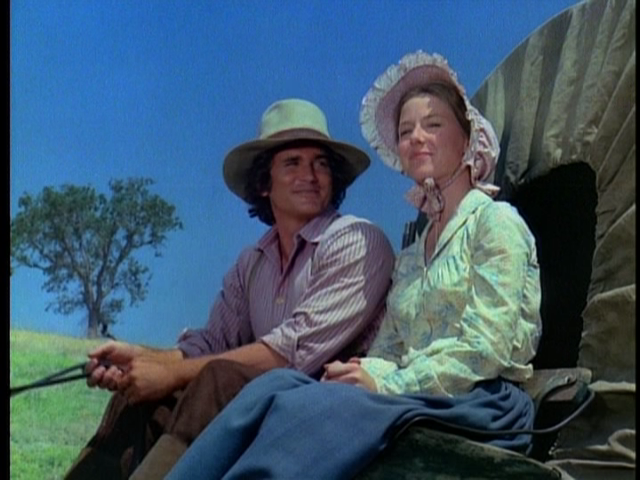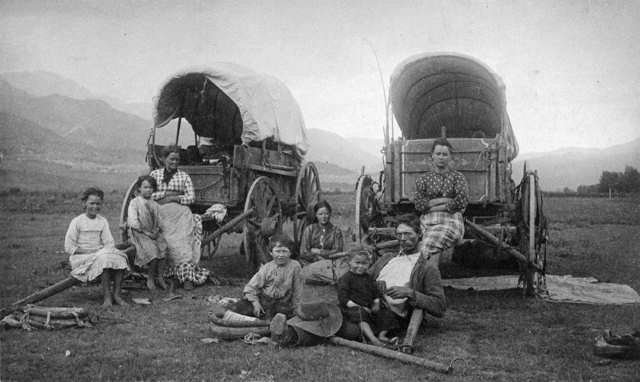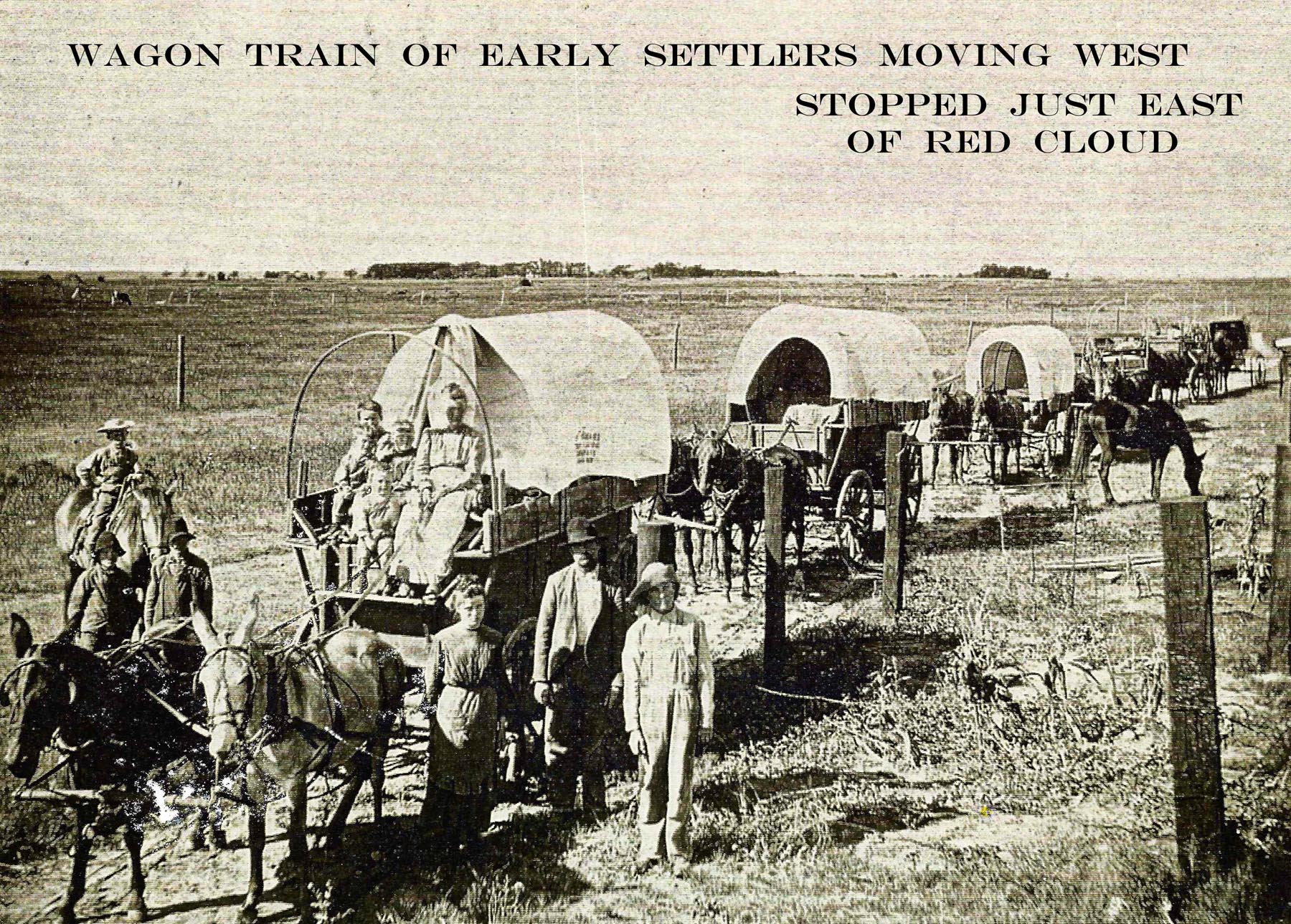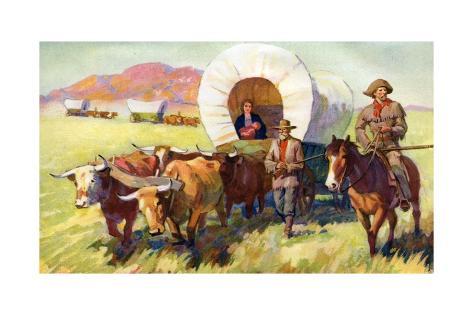Let me begin by saying that this is a list of 4 wagons and 1 cart which I found on the Internet to go by. Second that WAGON and CARTS are NOT BUILT for how many Animals that can Pull Them, THEY are Built for How Much WEIGHT needed to be HAULED, Example: Take a Chariot a type of Cart it can be pulled by 1, 2, 3 or 4 Horses did that change HOW much the Chariot could Carry NO!! What did was the Size and Strength(Axle) of the Chariot for the weight wanting to be Carried. IE- A 1 man chariot can only carry so much weight go above that(with say 3-4 men on same Chariot) and sooner or later the Chariot Axle breaks. Hence the Different Types of Chariots built by the Egyptians, Romans and Greeks.
Now lets get to it.
Conestoga Wagon:
Generally used for merchant or trade. The wagon is capable of carrying 6 tons,and it had a curved bottom. Dimensions:
Length of wagon box bottom–13 feet
Length of wagon box top–16 feet
Height of middle of body from ground–37 inches
Height of ends of body from ground–41 inches
Height of front wheels–44 inches
Height of rear wheels–59 inches
Height of wagon box–31 inches
Height of bows from body bed–6 feet
Width of wagon box–4 feet
Width of tires–3 inches
Width of wagon tread–64 inches
Sag in wagon box–8 inches
Prairie Schooner Wagon:
This is the wagon that crossed the Plains of America to settle the west. The wagon is capable of 1-1/2 tons (3,000 lbs)while generally only being around 1,300 lbs empty. The settlers although were told to keep the weight to somewhere between 2,000-2,500 lbs. That was so that the animals made it all the way being it was several months travel as well as hundreds to possibly thousands of miles of a journey.
Dimensions:
The wagon box was 10 feet long and 3-1/2 feet wide by 2-3 feet deep.
The wheels were 50 in diameter on the rear and 44 in on the front. It's wheelbase was over 5 feet wide.
With the Bonnet on the wagon stood at around 10 feet tall.
British Army General Service Wagon:
This wagon was used by the British in Africa and the 1st World War. Dimensions:
Length, without pole 11 feet 2 in
Height, with seat 6 feet 1 in
Height, without seat 4 feet 8 in
Track 4 feet 8 in
Width 6 feet 0 in
Floor space, length 10 feet 0 in
Floor space, width 3 feet 2 in
Minimum space required to turn in 32 feet 0 in
Weight complete 1,380 lbs.
Capacity 5,000 lbs.
The box is 10 feet 5-1/2 in long inside; depth inside, minus shelving 13 in ; width inside, 38 in. The shelving is flared 8 in, removable, running full length of box and across the back. On the outside of the box are ten hooks for rope lashings.The driver's seat is full width of body.
Borax Wagon with the 20 Mule Team:
This wagon was used in hauling Borax ore out of Death Valley, California. They were made to haul 10 tons each, with 2 wagons plus a water tank wagon being hauled by a single Team for a total of 36-1/2 tons.
Dimensions:
Iron Rims mounted on wood 8 in wide by 1 in thick. Rear wheels were 7 feet tall and 5 feet tall for the front.
The bed was 16 feet long by 4 feet wide by 6 feet deep.
Empty the wagon weighed 7,800 lbs, while able to carry 10 tons of cargo.
The Red River Ox Cart:
This Cart was used by Native Americans in the North West as well as by fur Trappers for bringing their furs in to be traded. These carts were made for ease of build and repair as well as to functioning in the environment needed. They were made completly of wood and sinew or hemp rope for lashing together of the wooden parts.
Dimensions:
There really are no definable dimensions for this cart being each was generally built slightly different than the others with no set blueprints for them. Although I did find a description that follows. * Bed was roughly 6-1/2 feet long by 33 in wide by Depth was what you made it generally 1-2 feet or just open. My adaptation of depth was done through most pictures I found online.* This cart could carry either 500 lbs by horse or 1,000 lbs by ox. The wheels were between 4-6 feet tall with them more at the 5-6 feet tall for stability as well as clearance over rocks,tree stumps ect. The wheels were also dished outwards for better stability.
This wagon was made to be broken down or taken apart so that it could float across shallow streams and rivers. The cart could also be made to have a bonnet type covering. Because of the nature of how this cart was built it made a terrible screeching sound from the wheels turning around the axle with no grease or oil due to if they were then it would just collect dirt and sand and cause more problems than the noise. It should be said that the sound could be heard 1 mile away to 3 miles when a caravan of carts were moving together. It had 2 poles at 13 feet long that sat on the axle as well as attached to the box 1 end of the poles would be where the horse or ox would be attached to haul the cart.
It should be noted that each of these wagons were pulled by different animals.
The Conestoga wagon was pulled by up to 8 horses or 12 oxen.
The Prairie Schooner was pulled by 10-12 horses or mules but more generally pulled by 6 oxen.
The British Army General wagon generally used 2 horses although 4 could be used if needed.
The Borax wagon was pulled by either 20 mules or 18 mules and 2 horses with the horses nearest the wagon to help better to get it moving.
The Red River Ox Cart was pulled by either a horse but generally an ox. This was due to the horse only being able to haul a smaller amount or get tired doing so. As well as that most times these Carts were pulled through mud, marsh, streams and rivers and the ox was better for pulling through mud and marsh areas.
Now given these to work with Lets look at the Game 400 lb wagon and what it can carry. Being that it is 3-1/4 the size of the Prairie Schooner Wagon we will use that as a reference. PSW- 1,300 lb weight, Haul: 1-1/2 Tons (3,000 lbs) so 1,300 divide by 3.25= 400 lbs and 3,000 divide by 3.25= 923.0769 lbs or 923 lbs rounded. NOW for game purposes I would and could easily accept a 950 lb Capacity for the 400 lb Wagon. PLEASE Remember that the lighter the Wagon the Less it will Haul..... The Heavier the Wagon the More it will Haul, this is of course Not using Magic on the Wagon!!
Now for the Cart Listed in the Game 200 lbs, being that I have not found a weight for the Cart I described above I can easily assume that it weighed somewhere between 100-200 lbs. So for Game I would use the Stats I Found of 500 lbs for Horse or 1,000 lbs for an Ox to be carried by the Cart. Now could the Cart carry more? Of course and put in a More Urban setting(being beefed up to do so) Example: 12 foot long bed axle has to be stronger so you could roughly double the weight carried with just that, as well as add more weight to the Cart.
Finally I want to give you all something to think about, I asked my DM at the time MANY MANY years ago for the largest possible wagon bed and this is what he gave me. 18 ft. long by 12 ft. wide by 6 ft. deep, when he gave me this I of course was astonished by the size. It wasn't until a few Years Later that I found what he Referenced it off of THE BORAX WAGON, Yes it is roughly 4x the Borax Wagons size BUT with that knowledge it could be built, again we are in a fantasy world and YES I can see where if the Dwarves needed a Wagon that size for mining they would get it Built.
With that in Mind Battle Wagons here we go!!!! Always remember that this also depends on whether your DM will allow it or not.
I Truly Hope This Writing Helps.
Now lets get to it.
Conestoga Wagon:
Generally used for merchant or trade. The wagon is capable of carrying 6 tons,and it had a curved bottom. Dimensions:
Length of wagon box bottom–13 feet
Length of wagon box top–16 feet
Height of middle of body from ground–37 inches
Height of ends of body from ground–41 inches
Height of front wheels–44 inches
Height of rear wheels–59 inches
Height of wagon box–31 inches
Height of bows from body bed–6 feet
Width of wagon box–4 feet
Width of tires–3 inches
Width of wagon tread–64 inches
Sag in wagon box–8 inches
Prairie Schooner Wagon:
This is the wagon that crossed the Plains of America to settle the west. The wagon is capable of 1-1/2 tons (3,000 lbs)while generally only being around 1,300 lbs empty. The settlers although were told to keep the weight to somewhere between 2,000-2,500 lbs. That was so that the animals made it all the way being it was several months travel as well as hundreds to possibly thousands of miles of a journey.
Dimensions:
The wagon box was 10 feet long and 3-1/2 feet wide by 2-3 feet deep.
The wheels were 50 in diameter on the rear and 44 in on the front. It's wheelbase was over 5 feet wide.
With the Bonnet on the wagon stood at around 10 feet tall.
British Army General Service Wagon:
This wagon was used by the British in Africa and the 1st World War. Dimensions:
Length, without pole 11 feet 2 in
Height, with seat 6 feet 1 in
Height, without seat 4 feet 8 in
Track 4 feet 8 in
Width 6 feet 0 in
Floor space, length 10 feet 0 in
Floor space, width 3 feet 2 in
Minimum space required to turn in 32 feet 0 in
Weight complete 1,380 lbs.
Capacity 5,000 lbs.
The box is 10 feet 5-1/2 in long inside; depth inside, minus shelving 13 in ; width inside, 38 in. The shelving is flared 8 in, removable, running full length of box and across the back. On the outside of the box are ten hooks for rope lashings.The driver's seat is full width of body.
Borax Wagon with the 20 Mule Team:
This wagon was used in hauling Borax ore out of Death Valley, California. They were made to haul 10 tons each, with 2 wagons plus a water tank wagon being hauled by a single Team for a total of 36-1/2 tons.
Dimensions:
Iron Rims mounted on wood 8 in wide by 1 in thick. Rear wheels were 7 feet tall and 5 feet tall for the front.
The bed was 16 feet long by 4 feet wide by 6 feet deep.
Empty the wagon weighed 7,800 lbs, while able to carry 10 tons of cargo.
The Red River Ox Cart:
This Cart was used by Native Americans in the North West as well as by fur Trappers for bringing their furs in to be traded. These carts were made for ease of build and repair as well as to functioning in the environment needed. They were made completly of wood and sinew or hemp rope for lashing together of the wooden parts.
Dimensions:
There really are no definable dimensions for this cart being each was generally built slightly different than the others with no set blueprints for them. Although I did find a description that follows. * Bed was roughly 6-1/2 feet long by 33 in wide by Depth was what you made it generally 1-2 feet or just open. My adaptation of depth was done through most pictures I found online.* This cart could carry either 500 lbs by horse or 1,000 lbs by ox. The wheels were between 4-6 feet tall with them more at the 5-6 feet tall for stability as well as clearance over rocks,tree stumps ect. The wheels were also dished outwards for better stability.
This wagon was made to be broken down or taken apart so that it could float across shallow streams and rivers. The cart could also be made to have a bonnet type covering. Because of the nature of how this cart was built it made a terrible screeching sound from the wheels turning around the axle with no grease or oil due to if they were then it would just collect dirt and sand and cause more problems than the noise. It should be said that the sound could be heard 1 mile away to 3 miles when a caravan of carts were moving together. It had 2 poles at 13 feet long that sat on the axle as well as attached to the box 1 end of the poles would be where the horse or ox would be attached to haul the cart.
It should be noted that each of these wagons were pulled by different animals.
The Conestoga wagon was pulled by up to 8 horses or 12 oxen.
The Prairie Schooner was pulled by 10-12 horses or mules but more generally pulled by 6 oxen.
The British Army General wagon generally used 2 horses although 4 could be used if needed.
The Borax wagon was pulled by either 20 mules or 18 mules and 2 horses with the horses nearest the wagon to help better to get it moving.
The Red River Ox Cart was pulled by either a horse but generally an ox. This was due to the horse only being able to haul a smaller amount or get tired doing so. As well as that most times these Carts were pulled through mud, marsh, streams and rivers and the ox was better for pulling through mud and marsh areas.
Now given these to work with Lets look at the Game 400 lb wagon and what it can carry. Being that it is 3-1/4 the size of the Prairie Schooner Wagon we will use that as a reference. PSW- 1,300 lb weight, Haul: 1-1/2 Tons (3,000 lbs) so 1,300 divide by 3.25= 400 lbs and 3,000 divide by 3.25= 923.0769 lbs or 923 lbs rounded. NOW for game purposes I would and could easily accept a 950 lb Capacity for the 400 lb Wagon. PLEASE Remember that the lighter the Wagon the Less it will Haul..... The Heavier the Wagon the More it will Haul, this is of course Not using Magic on the Wagon!!
Now for the Cart Listed in the Game 200 lbs, being that I have not found a weight for the Cart I described above I can easily assume that it weighed somewhere between 100-200 lbs. So for Game I would use the Stats I Found of 500 lbs for Horse or 1,000 lbs for an Ox to be carried by the Cart. Now could the Cart carry more? Of course and put in a More Urban setting(being beefed up to do so) Example: 12 foot long bed axle has to be stronger so you could roughly double the weight carried with just that, as well as add more weight to the Cart.
Finally I want to give you all something to think about, I asked my DM at the time MANY MANY years ago for the largest possible wagon bed and this is what he gave me. 18 ft. long by 12 ft. wide by 6 ft. deep, when he gave me this I of course was astonished by the size. It wasn't until a few Years Later that I found what he Referenced it off of THE BORAX WAGON, Yes it is roughly 4x the Borax Wagons size BUT with that knowledge it could be built, again we are in a fantasy world and YES I can see where if the Dwarves needed a Wagon that size for mining they would get it Built.
With that in Mind Battle Wagons here we go!!!! Always remember that this also depends on whether your DM will allow it or not.
I Truly Hope This Writing Helps.












